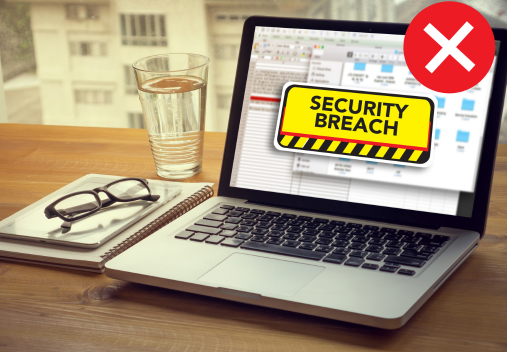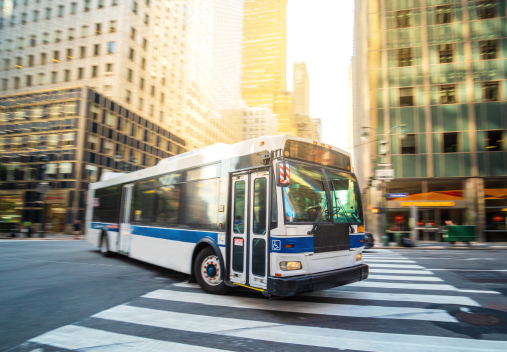
The Ultimate Guide to Physical Access Control System
Published by LenelS2 and copied with permission.
Organizations are prioritizing their physical security systems to ensure the security and safety of staff, physical assets, and proprietary information. This guide will discuss the many threats to businesses and how physical security systems like access control can help provide protection. From access control o video surveillance and analytics, this article will cover the latest and most effective security measures, Don’t leave your business vulnerable to attack; make sure you have the right physical security protections in place.
What is physical access control
Physical access control is a security strategy that regulates and monitors who is permitted to enter or move within specific physical locations, such as buildings, offices, data centers, or restricted zones. The main goal is to protect people, property, and sensitive information by preventing unauthorized entry and allowing only approved individuals into designated areas.
What Is Physical Security
Physical security creates a safe environment and allows for businesses to see hazards and threats before they happen either accidentally or incidentally. It keeps people, property, and information safe from unauthorized access.
What is the importance of physical security
Physical security measures can include a combination of access control locks, alarms, surveillance cameras, lighting systems, and other security measures. It’s important for businesses because advanced security can protect businesses from financial losses due to theft, misuse, or vandalism, as well as potential damage to your reputation. It also helps ensure that employees are safe and secure at work.
What Are Physical Security Risks?
Physical security risks are any dangers that could potentially be a threat to your business, such as unauthorized access, theft, vandalism, or intrusion. They can come from both external sources, such as those attempting to steal intellectual property, trade secrets, or physical assets, or internal sources, such as disgruntled employees. The most common physical security threats include:
- Burglary or theft of physical assets
- Theft of intellectual property trade secrets, and confidential data
- Vandalism
- Cyberattacks
- Unauthorized access
- Natural disasters
- Sabotage
- Human error/negligence
These threats can be anywhere, meaning that no business is truly safe from potential attacks until they have the right physical and cyber security measures in place. That’s why it’s so important to be aware of the potential risks and steps you can take to protect your business.
What Are the Different Types of Physical Security?
Modern physical security solutions span a wide array from both traditional methods to all sorts of modern technology.
Cloud-Based Access Control
This type of access control relies on cloud-based technology to allow users to enter certain restricted areas. For example, a building owner may give specific employees access to parts of the office based on their role in the company. This type of activity can be achieved without the need for information technology assets or trained personnel on-premises. For more info on access control, view Remee’s recent guide on access control technology.
Video Surveillance
This type of security system can be monitored remotely or onsite and includes cameras, DVRs, and NVRs. A video surveillance management system is used to monitor points of entry and prevent unauthorized access.
Mobile Credentialing
This type of security system uses smartphones and other mobile devices as credentials for entry into restricted areas. It eliminates the need for physical keys or cards, making it easier for businesses to manage access control. It also makes it very easy for administrators to grant or revoke access as needed.
Physical Barriers
This type of physical security includes fences, gates, or walls that are used to create a secure perimeter and deter intruders and those with malicious intent.
Keyless Entry
This type of access control uses digital locks that are operated using a code, key card, or smartphone. Keyless entry eliminates the need for physical keys and makes it easier for businesses to manage access control.
Intrusion Detection
This type of physical security includes motion sensors, contact sensors, and other devices that alert you to the presence of an intruder.
Emergency Response
This type of physical security includes alarm systems and panic buttons that alert the authorities in the event of an emergency. In addition, it includes tools for command center operations to provide true situational awareness for near real-time response.
Visitor Management
This type of physical security allows businesses to grant temporary access to visitors, track visitors and ensure that only authorized personnel have access to certain areas. These are just some examples of the different types of physical security solutions available. As technology advances, new solutions are constantly emerging to help businesses keep their premises safe and secure.
What Are the Requirements for Physical Security?
The goal of physical security is to stay ahead of threats, including silent threats. While there may be regulations regarding fire safety, not every industry is heavily regulated. Federal buildings often have more requirements than a commercial building, making it important for businesses to tailor their security program to their needs.
Many regulations that affect physical security do not directly speak to security policies and procedures. These include the below:
GDPR Security Requirements
These are the privacy standards that govern the European Union. Data collection and storage must face specific requirements. Other regions are following the example of GDPR and implementing similar regulations.
OSHA Requirements
OSHA requirements are typically associated with manufacturing, construction, and agriculture. Physical security can be used as a tool to keep employees safe. For example: If there is a chemical spill, doors to a facility can be locked to ensure no one can access that area.
8 Top Tips for Ensuring Physical Security
By following the tips below, you’ll be better equipped to protect your business from potential threats. The most important thing is to remain vigilant and proactively update your physical security measures as needed. Doing so will ensure that your business, data, and personnel remain safe and secure.
1. Use historical information and predictive analytics
Use the data collected from past physical security incidents to inform your current and future approaches to physical security. This can include tracking trends in break-ins, thefts, or other threats. This historical information can also help security teams patch up vulnerabilities before they are exploited.
2. Ensure proper communication connections for mobile
Use modern systems that can integrate with mobile phones and apps. This provides an added layer of security to ensure that only authorized personnel have access to certain areas, and allows the user to make changes to access levels quickly and easily.
3. Leverage AI to sift through data
There is a vast amount of data being collected through a physical security system, making it hard for teams to quickly determine which threats are real and which are nuisance alarms. AI can help filter this information so teams can swiftly react.
4. Develop a strict physical access policy
Outline who is allowed access to certain areas of the business and what type of access they have. Make sure that everyone in the organization is aware of these policies and is trained to follow them.
5. Reduce manual access control
Automate access control where possible. This can include using RFID cards, biometrics, or other methods to ensure that only those with the proper credentials are able to enter certain areas of the business.
6. Embrace cloud-based security
Cloud-based security solutions are becoming increasingly popular due to their scalability, cost-effectiveness, and ease of use. They provide an added layer of security not only for physical access control but also for digital information. Additionally, they eliminate the need to own and manage information technology infrastructure.
7. Monitor and update your physical security system
Regularly monitor your physical security system to ensure it is up-to-date and running smoothly. Additionally, update your access control policy as necessary to keep up with trends in physical security threats.
8. Create a disaster recovery plan for if things go wrong
Always have a plan in place to respond to a physical security breach or threat. This should include steps such as immediately notifying the authorities and quickly disabling access so that any threats can be contained quickly.
Concerns in Physical Security
Physical security measures are not foolproof. There are still potential concerns that need to be considered, such as:
- Inadequate training of personnel in terms of physical security protocols.
- Unauthorized access due to weak passwords or other credentials.
- Unmonitored areas due to lack of proper surveillance systems.
- Vulnerabilities due to outdated security systems.
- Compliance issues due to regulations such as GDPR or OSHA requirements.
- The ever-changing threat landscape.
However, with the right physical security systems and tools, teams can address these concerns to protect their buildings, staff, and IT assets. Keep reading to see how Remee and Acenes solved a similar access control issue.
Why is Cloud Technology Important for Physical Security?

As threats become more advanced, security systems need to become more resistant to cyberattacks. However, security teams often don’t have the training or internal resources to ensure that their physical access control systems are secure. With cloud-based technology, updates can be done centrally and deployed continuously (without putting the system down for a release). Security teams as a result can outsource the IT component of their systems to reputable companies, who will ensure that systems work properly, and that data collection complies with local laws.
Using the cloud comes with additional benefits when it comes to simplifying your security. With the cloud, you can access data from different locations. Also, you don’t have to maintain your own infrastructure and instead can finance security as an operational expense instead of a capital one.
Physical Security Examples
Alexion Pharmaceuticals Needed An Easy Way to Manage Its Global Locations
As one of the fastest-growing biopharmaceutical companies in the world, Alexion needed a way to ensure comprehensive physical security at all of its global locations in a way that was easy to manage and compliant. The company turned to LenelS2 for a robust system with flexible, leading-edge technology and responsive service. After adopting the LenelS2™ NetBox™ access control system and other tools, previous problems all but disappeared, including bandwidth issues associated with video streaming.
Rochester Institute of Technology Needed To Provide Students and Faculty Access Control During the Pandemic
As a private research university, Rochester Institute of Technology (RIT) needed a way to ensure that only those students, faculty, and staff who abided by the RIT Safety Plan and NY State Guidelines could access campus buildings during the COVID-19 pandemic. To that end, the university adopted the LenelS2™ OnGuard® access control system, using the Blocked Person feature to ensure only health protocol-compliant students and faculty had campus access. Through LenelS2, they were able to improve their campus safety and security policies.
How LenelS2 Can Help Build Robust Physical Security
Physical security is an essential component of any safety and security strategy. By implementing comprehensive physical security measures such as access control systems, video surveillance systems, and mobile credentialing solutions, businesses can protect themselves from theft, vandalism, unauthorized entry, and continuously changing cyber threats. Cloud technology is also becoming increasingly important for physical security, as it helps reduce operational costs while making it easier to deploy changes quickly when necessary.
As the global leader in advanced physical security solutions, LenelS2 can help you preserve existing investments while bringing them together with new technology. Our integration capabilities span a number of organizations in access control, video monitoring, incident management, and credential creation and management.
Our solutions include access control, video surveillance, mobile credentialing, and more. We provide security solutions to small, mid, and large organizations including global enterprises that span a spectrum of industries such as education, energy, healthcare, government, transportation, commercial real estate, data centers, and more.